It may sound weird and a bit disturbing, but it’s true: your axolotl can morph into a land-dwelling salamander.
The phenomenon is very rare, but when it happens, the axolotl undergoes a complete transformation. And the animal may or may not survive this process of metamorphosis.
As an axolotl owner, you may wonder what this transformation actually looks like, and what you should do when it happens.
Learning about this transformation can be useful for any axolotl owner.
In this post, we are going to discuss everything you need to know about axolotl morphing.
Here you will learn about the signs and symptoms, the reasons, and the special care that axolotls require during this process. At the end of the article, you will find some useful information to do with your axie.
Contents
What Does It Mean When An Axolotl Is Morphing?
Metamorphosis in axolotls is a rare phenomenon. Due to a genetic mutation, most axolotls never morph.
Morphing involves some changes that turn an axolotl from aquatic to terrestrial, which means the animal becomes capable of living on land.
The transition is characterized by bulging eyes, thickening back legs, skin changes, loss of gills, and receding fins. After the transformation, the axolotl looks more like a salamander or land newt.
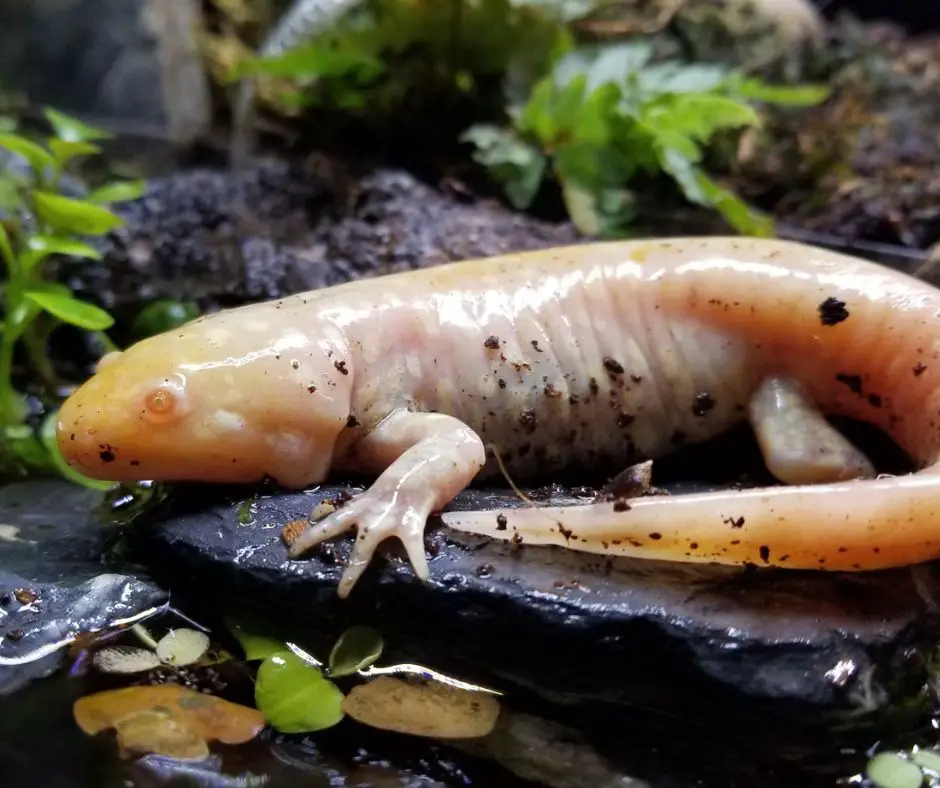
Axolotl Morphing Signs
As an axolotl undergoes metamorphosis, it shows some clear changes in physical features.
The signs are obvious, so you can tell your axolotl is undergoing the process just by looking at the creature. Here are the signs:
| Axolotl Morphing Signs | Explanations |
| Receding dorsal fin | The dorsal fin gradually decreases in size, and at a point it completely vanishes. |
| Receding tail fin | The tail is no longer used to propel the body through the water. The fin grows smaller and then disappears completely. |
| Bulging eyes | The axolotl’s eyes seem to protrude out. This condition, known as exophthalmia, can also be caused by high nitrogen levels in the water. In such a case, exophthalmia is treatable. But if this condition appears with other signs of metamorphosis, most probably your axolotl is morphing. |
| Developing eyelids | Normal axolotls lack eyelids. As an axolotl starts undergoing the process of metamorphosis, eyelids start to form, enabling the animal to blink. |
| Loss of gill stocks | The gill stalks, including the feathery parts, begin to get absorbed by the body. At a point, the axolotl no longer needs its gills to breathe. Instead, it uses its lungs. |
| Thicker and larger legs | The legs become thicker and larger, and therefore the axolotl becomes capable of walking on land. |
| Changes in behavior | A morphed axolotl behaves more like a terrestrial animal and less like an aquatic one. And that may make you think that your beloved axolotl has become something else. |
| Color changes | As the metamorphosis takes place, the axolotl changes its body color. The skin tone becomes lighter or darker. |
| Skin changes | As it morphs, the axolotl will have a darker skin tone or a more intense pattern on its skin. |
| Less webbed feet | The axolotl’s toes become thicker and more prominent, and the feet look less froglike. |
| Changes in Activity | The animal can no longer swim comfortably, in part because of the receded or lost fins. During the final stages, your axolotl will frequently try to get out of water. |
What Causes An Axolotl To Morph?
As an axolotl owner, it may be helpful for you to understand the causes behind this transformation.
If you have a good understanding of why your axolotl is undergoing this change, you may think about ways to prevent it.
Exposure to iodine is one of the main causes of morphing in axolotls. Iodine, which comes from some sources of food and some brands of salt, is thought to be responsible for changes in axolotl’s brain.
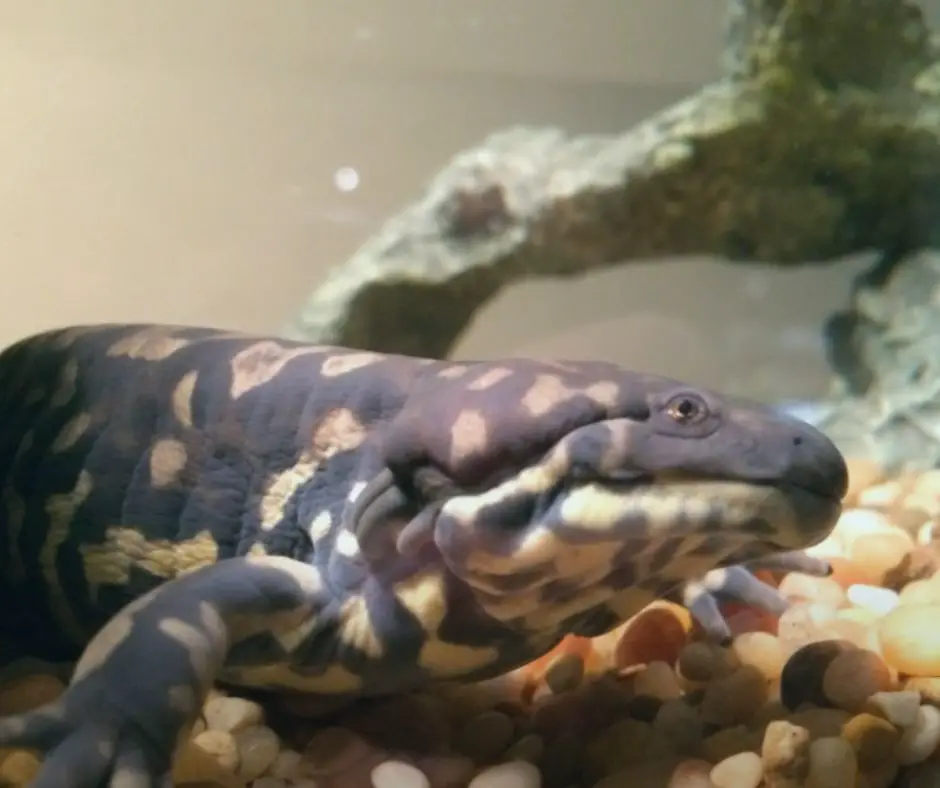
It contributes to the production of thyroxine—a hormone that starts the whole process of the morphing journey.
Genetics also play a role here. In the past, axolotls were hybridized with some species of tiger salamanders. Some biologists think that the gene is still active in some axolotls.
Poor water conditions can also lead to transformation. The ideal water temperature for axolotls is between 16ºC and 18ºC.
If the temperature is 20ºC or higher, your axolotl will try to escape the tank. This behavior can gradually lead to the onset of metamorphosis.
Over time, significant changes in water parameters can profoundly change the biological makeup of your axolotl. So, make sure you measure the water parameters and temperatures regularly.
An overcrowded tank may trigger the transformation. Dirty living conditions directly affect the hormones of axolotls.
In an overcrowded tank, axolotls tend to become cannibalistic, nipping at one another’s gills. Finding the environment too antagonistic, axolotl may try to escape the tank in order to survive.
And this tendency to escape the tank can contribute to the animal’s morphing journey.
Therefore, it is not a good idea to keep too many axolotls in the tank. With that said, most axolotl owners are unlikely to keep multiple axolotls in a small tank.
People who regularly buy and sell axolotls tend to do it, though.
It is important to note here that morphing in axolotls is caused by a self-erasing gene. A morphed axolotl is almost impossible to breed.
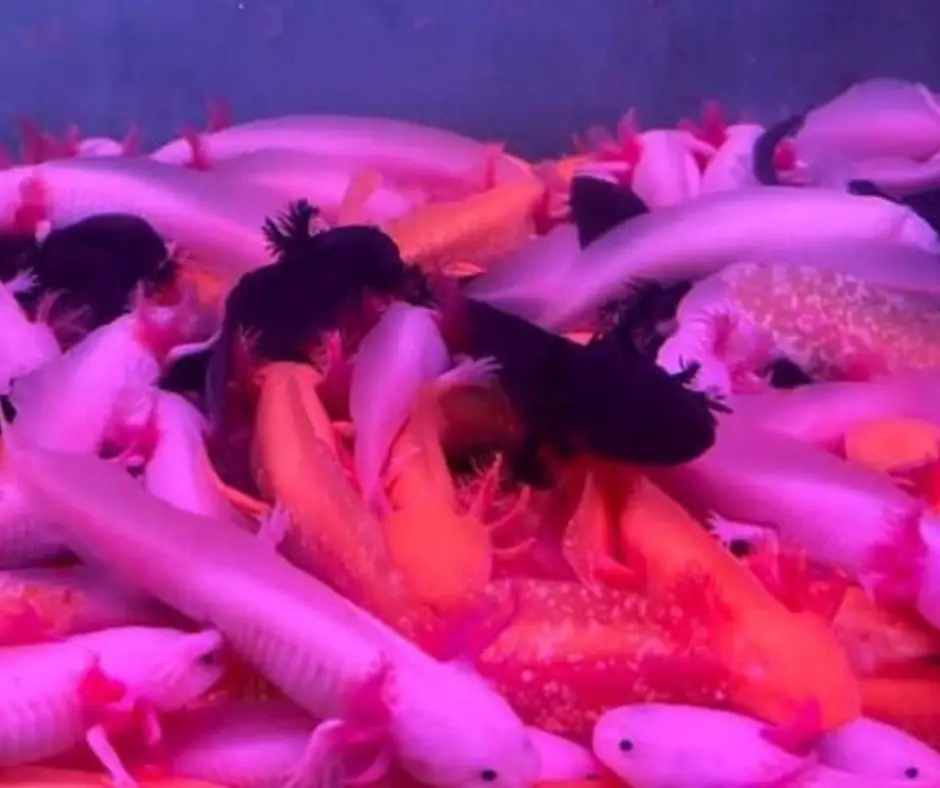
What Happens When an Axolotl Metamorphosis?
As an axolotl undergoes the process of metamorphosis, radical physiological changes take place.
The gills start to get shorter, and at a point, they are completely gone. The legs become stronger, which enables the animal to walk on land. The animal’s eyes bulge, and eyelids begin to form. Its fins also recede.
And when the process is done, the axolotl turns into a salamander and prefers to live on the land.
While the animal becomes terrestrial, it can still move around in the water. It mostly lives on the land but occasionally takes a dip.
How Long Does It Take For An Axolotl To Morph
The entire process of metamorphosis takes a month or so. To some extent, it depends on the age of the axolotl. Just in a month, it is transformed from an aquatic animal to a terrestrial one.
How Do You Stop Axolotls From Morphing?
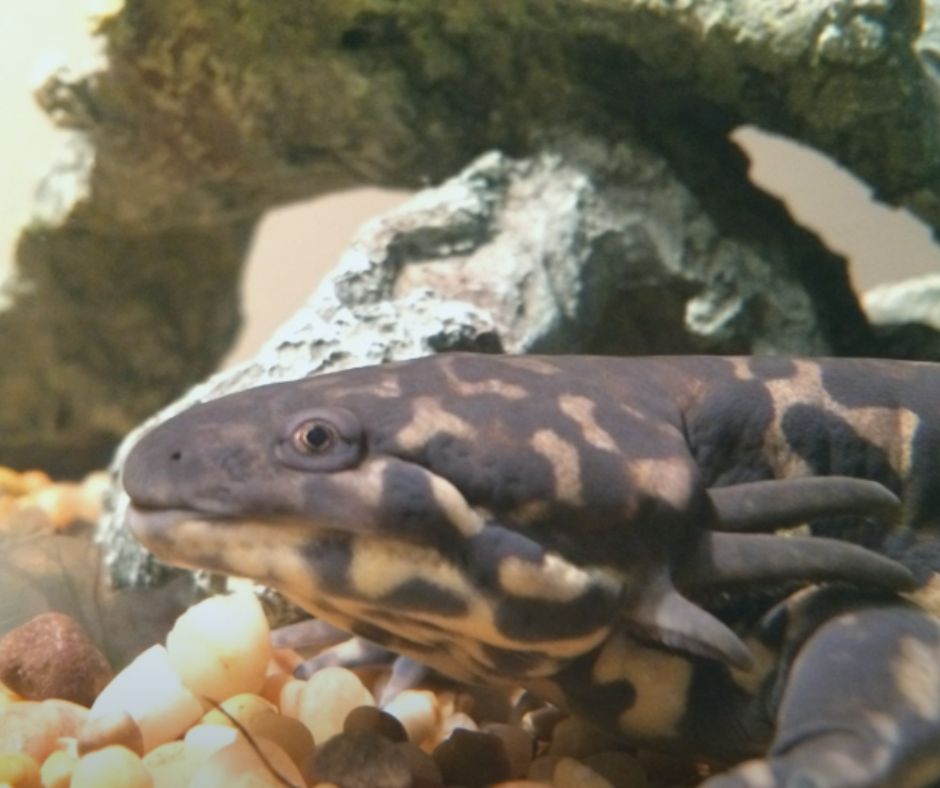
Once the morphing process has started, it’s not possible to stop the transformation.
And once the metamorphosis has been completed, the salamander will no longer return to its original state.
So, the only thing you can do is to just allow it to happen. Trying to stop the process of morphing can be bad, even fatal for your beloved pet.
Can You Force An Axolotl To Morph?
Yes, it can be done by adding some thyroid hormone to the tank water. It is important to provide the thyroid hormone at an appropriate concentration and at an appropriate time.
With that said, we discourage doing it because the transformation is painful for the animal.
An artificially induced metamorphosis can kill your axolotl. Even if you are successful in your attempt, the process will shorten the lifespan of the animal.
Never try to introduce metamorphosis in your axolotl. If you want a salamander, get a salamander. Forcing an axolotl to morph is animal cruelty.
How to Care for A Morphing Axolotl
As an axolotl owner, you may want to learn how to take care of a morphing axolotl. It’s important to take action when the signs of transformation are apparent.
Your goal should be to allow the animal to morph, not to hinder the process. You will have to provide the animal with conditions that are conducive to its survival during the process of metamorphosis.
Here are some things you can do:
Change Habitat for the Axolotl to Morph
Changing the axolotl’s habitat is the first thing to do. Keep in mind that once transformed, the animal will no longer be able to swim because its dorsal fin and tail will be gone.
Put your little friend into a shallow tub or bucket. Pour very little water into it so that your axolotl can easily get out of the water and breathe air. Just make it easy for the animal to leave the water.
Zilla 10 Gallon Pet Reptile Starter Habitat Kit
- Ideal habitat for small desert-dwelling animals
- Terrarium Liner is odor-fighting, non-abrasive and treated with a biodegradable enzyme
- Glass tank is Made in the USA
- Desert Reptile Starter Kit includes: 2 Reflective Domes for heat and light; Night Black Incandescent and White Spot Bulbs; Screen Cover; Humidity/Temperature Gauge; Brown Terrarium Liner and Setup Guide
- Does not include UVB lighting which may be required for some desert-dwelling reptiles
Last update on 2022-12-29 / Affiliate links / Images from Amazon Product Advertising API
Provide an Out of Water Area to morph
It’s a good idea to leave some dry land on one side of the tub or bucket. You can use stones, rocks, or sand for this purpose.
On the dry section, provide some hiding spots for your axolotl. It will make the process less stressful for the animal. Cut a styrofoam cut in half, or consider investing in something readymade.
The transformed creature will be capable of walking and climbing, so you may consider scaling up the wall of the container.
Keep the animal confined. Putting a lid on the container is a good idea, but make sure the lid has holes for ventilation.
Monitor Behavior Post-Metamorphosis
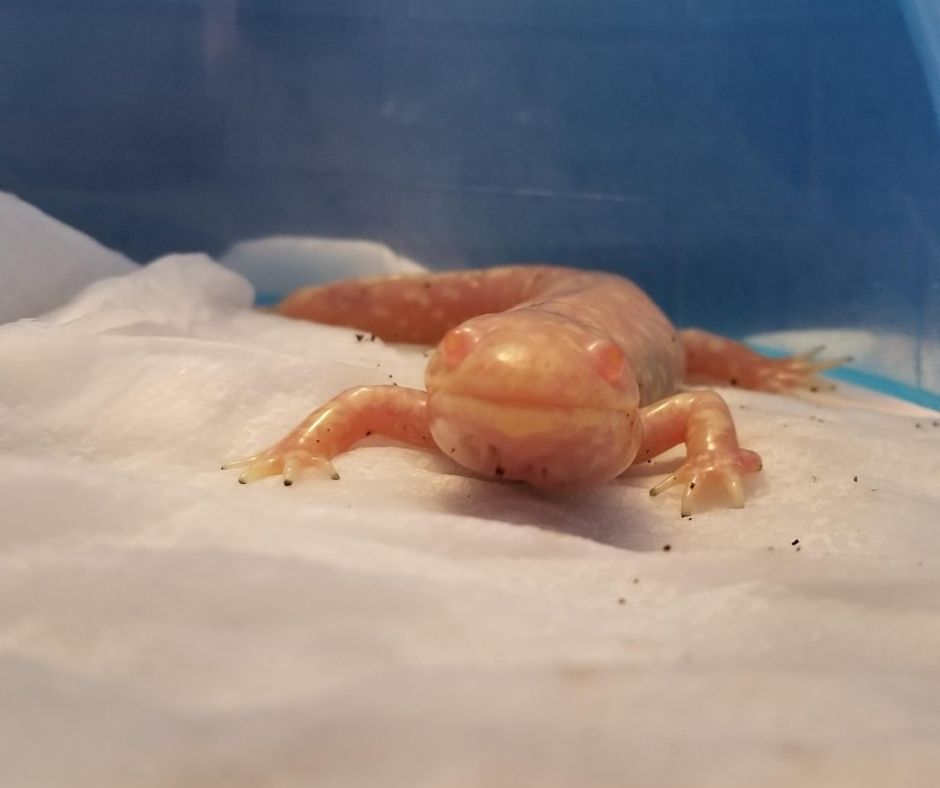
Once the axolotl has undergone the transformation and becomes land-dwelling, place it into a container with a few hides, a cover, and some clean damp paper towels.
Replace the paper towels regularly, preferably every day.
Not much data is available on the metamorphosis effects on axolotls. Keep the transformed animal in a clutter-free and clean environment so that you can easily monitor the behavioral changes.
Notice if it looks healthy and happy.
If you think your little friend has a health issue, get in touch with a veterinarian. The veterinarian may be able to do something if he or she has experience with salamanders.
Enclosure Adjustments
Morphed axolotls act much like mole salamanders, which means they like to burrow and dig.
To prepare the post-metamorphosis enclosure, you can use large stones, plants, hides, sanitized wood, and other decorative items.
Morphed axolotls use their skin to absorb moisture—a process known as osmosis. Keep moist paper towels and moist soil in the enclosure.
The rocks you choose for the vivarium should be larger than the head of the salamander.
The temperature in the vivarium should be between 18.3 and 22.2 degrees Celsius. To provide sufficient hydration for the salamander, you can also keep a bowl of water inside the vivarium.
Introduce Food
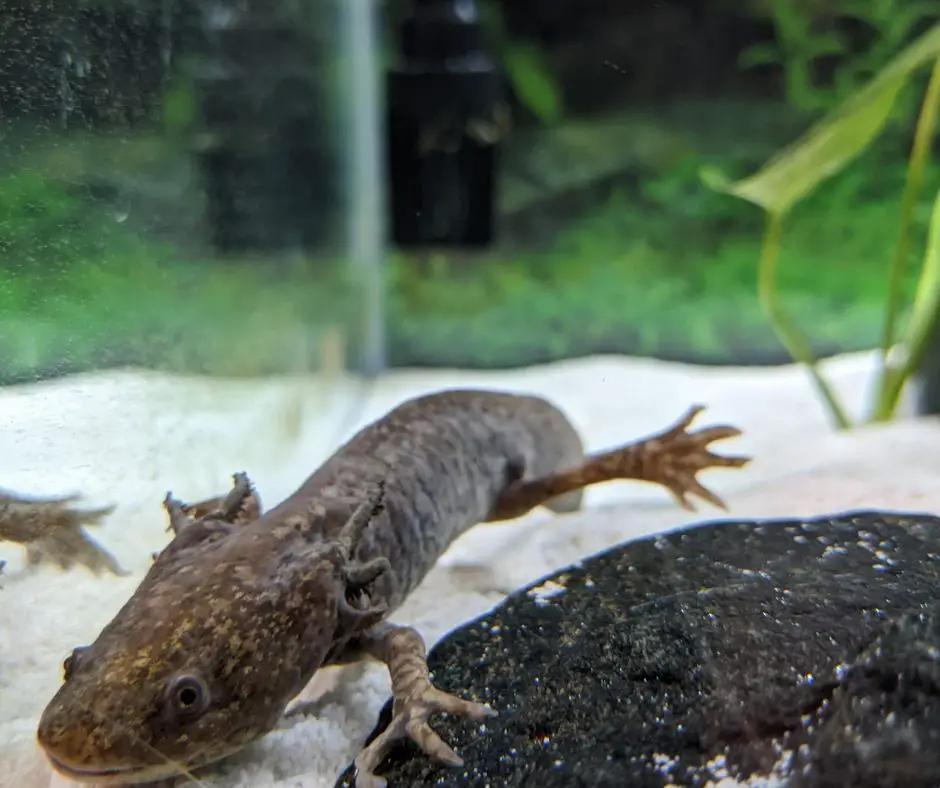
The newly morphed axolotls will need different types of food. Your axolotl may refuse to eat at all while undergoing the process of metamorphosis.
The animal will lose weight during this time. Introduce small live crickets or small live earthworms to the morphed axolotl.
If some crickets remain uneaten, they may bite, stress, harm, or kill the morphed axolotl. So, make sure to remove the uneaten crickets from the vivarium.
If you want your morphed axolotl to gain weight, feed it waxworms, which are rich in fat. Small to medium crickets, freshly shed mealworms, slugs, and earthworms are some other good options.
Axolotl vs. Morphed Axolotl
As we have already stated, a morphed axolotl is no longer an aquatic animal; it becomes a terrestrial animal.
A morphed axolotl also differs in terms of lifespan, size, dietary requirements, habitat, gender, and breeding. Let’s shed some light on the differences.
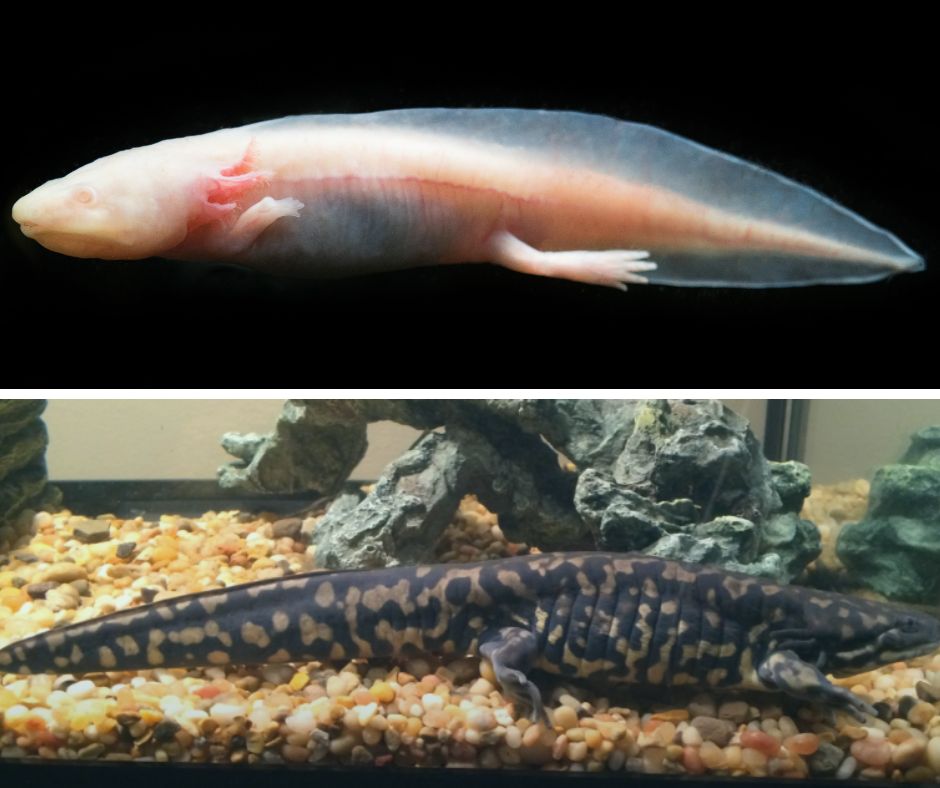
Lifespan
Axolotls typically live 5-10 years in the wild and 10-15 years in captivity.
This difference in lifespan is due to the fact that in their natural habitat, these salamanders face threats such as illness, predators, and habitat loss.
But how long does a naturally morphed axolotl live? If an axolotl undergoes metamorphosis before reaching sexual maturity, it is likely to live a pretty long life—up to 15 years.
But if the transformation happens during the animal’s adulthood, its lifespan will be shortened drastically.
Axolotls that undergo metamorphosis during adulthood usually look sick and become disinterested in everything, including food. Regular hormone injections can prolong the lifespan of morphed axolotls.
If your axolotl naturally undergoes the process of metamorphosis before reaching sexual maturity, lives in a healthy environment, eats a healthy diet, and has low-stress levels, you can expect the creature to live up to 15 years of age.
Size
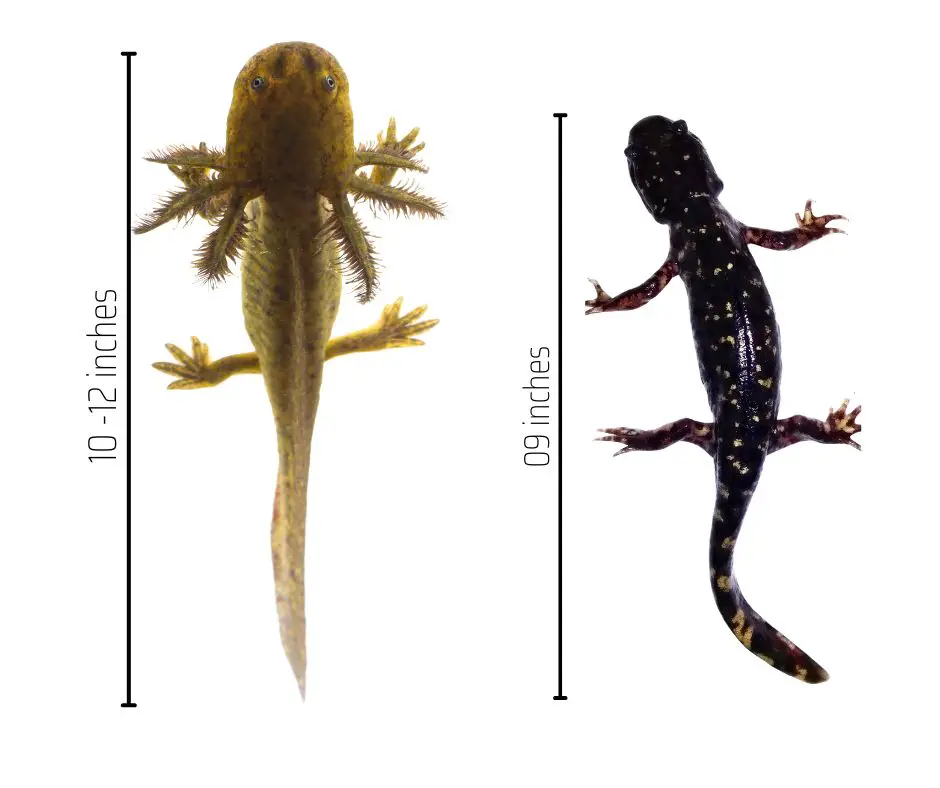
When fully grown in captivity, an axolotl measures about 10 inches. Larger axolotls, measuring up to 12 inches, have been observed in the wild.
Morphed axolotls are about the same size as normal ones. The size depends on the animal’s age and diet. With that said, morphed axolotls rarely measure more than 9 inches.
Dietary Requirements
Axolotls are carnivores, so make sure your little friend’s diet contains a lot of protein. While axolotls have small teeth, they are not used for chewing.
Axolotls just swallow food. If you have a juvenile axolotl, feed it every day. And if it is an adult one, feed it every other day.
Some food options for axolotls include pellet food, frozen food such as frozen brine shrimp, tilapia, beef heart, and bloodworms.
You can also feed fresh food such as maggots, earthworms, and mealworms.
Morphed axolotls love eating crickets, earthworms, grasshoppers, waxworms, flies, moths, beetles, and small mice.
It is a good idea to avoid foods that contain a lot of fat. Remove uneaten live foods because they can cause distress for your axolotl.
However, feel free to leave uneaten live earthworms in the tank. Do not feel compelled to buy vitamin or mineral supplements for your morphed axolotl. These supplements are not essential.
Do not feed the same food every day. Add some variety to the menu.
As the animal becomes terrestrial, it is exposed to warmer temperatures that speed up its metabolism.
Therefore, a morphed axolotl eats more frequently. In general, a transformed axolotl should be fed two or three times a week.
However, not all morphed axolotls have the same dietary habits. So, observe the animal and try to understand the dietary habits of the transformed animal.
Required Tank
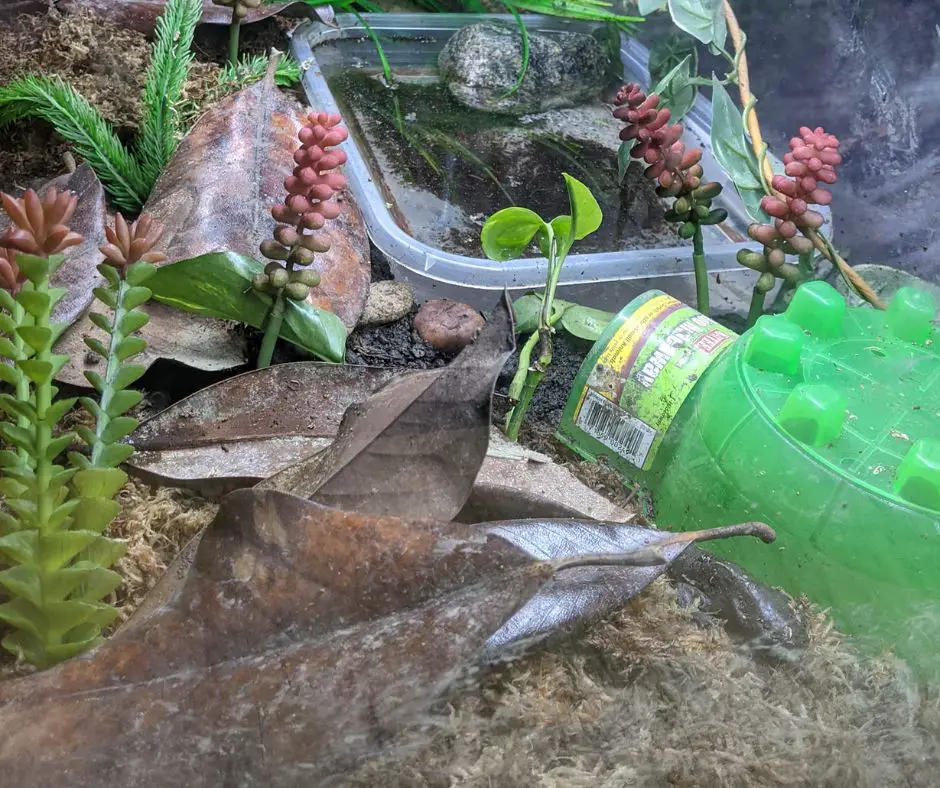
A normal axolotl requires at least a 20-gallon tank to live in. At least a 40-gallon tank is required for two axolotls.
The tank should be placed away from bright sunlight, and the water temperature should be 14-20°C. The pH level of the tank water should be between 6.5 and 7.5.
A morphed axolotl, in contrast, has very different requirements in terms of tank setup. The setup should be semi-aquatic: 50% water and 50% land vivarium.
For a single morphed axolotl, the tank should be at least 4 feet long. Make arrangements for aquatic and dry areas in the same tank.
The water will not remain pristine; the salamander will drag mud into the water. Therefore, make sure you change the water regularly.
Gender
Does the process of metamorphosis change an axolotl’s gender? No. Your axolotl may undergo the process of metamorphosis before or after attaining sexual maturity.
A morphed axolotl’s gender can be identified by observing its behavior during the mating season.
A swollen cloaca is a sign that the axolotl is a male. A female axolotl’s abdominal region becomes fatter during the mating season—due to egg production.
Breeding
In captivity, breeding metamorphosed axolotls is almost impossible. However, accomplishing this feat may be possible under semi-wild conditions.
So, if you are raising the animal in a garden, greenhouse, or breeding pond, you can try this.
The procedure requires simulating a hibernation period. But it is important to remember that the success or failure of your attempt largely depends on the species of the axolotl.
Axolotl metamorphosis is thought to be caused by a self-erasing gene, and that’s why it’s so hard to breed a morphed axolotl.
REPTI ZOO Large 34 Gallon Reptile Glass
- [Patent Design] Size :24" x 18" x 18". Tough screen top provides ventilation and allows uvb and infrared penetration
- Raised bottom frame in order to fit a substrate heater; Waterproof bottom makes this tank can be used both as desert terrarium and rainforest tank.
- Front doors can open separately, easy to feed your pet and prevent escape(not suitable for ball python)
- Window ventilation on left and right, on top and right have closable inlets for wires and tubing
- Easy to install or knock-down in 5 minutes with step by step instructions; Our glass terrariums are carefully packaged with tough cardboard and thickened reinforced foam for transportation. Should you have any questions when receive it, please feel free to contact us. Free replacement service provided for damaged parts.
Last update on 2022-12-29 / Affiliate links / Images from Amazon Product Advertising API
FAQs
How do I know if my axolotl is morphing?
There are some clear signs that indicate your axolotl is morphing. These signs include disappearing dorsal fin, receding tail fin, receding gills, bulging eyes, formation of eyelids, less webbed feet, thicker legs, difficulty in swimming, and color changes.
How Often Should I Feed My Morphed Axolotl?
Once your axolotl has undergone the transformation, feed it two or three times a day. A morphed axolotl is no longer an aquatic animal; it’s a terrestrial animal and therefore has different dietary requirements. Exposure to higher temperatures speeds up the animal’s metabolism. That’s why a morphed axolotl needs to eat more frequently.
What is the lifespan of a morphed axolotl?
A naturally morphed axolotl, if it lives in a healthy environment, has low stress levels, and sticks to a healthy diet, can live up to 15 years. However, if you fail to ensure healthy living conditions, the lifespan of the axolotl will be cut short.
If an axolotl undergoes metamorphosis at a tender age, the animal is likely to live a long life after the transformation. However, if an adult axolotl undergoes metamorphosis, the process will drastically reduce the animal’s lifespan.
How big do morphed axolotls get?
The size of a morphed axolotl is approximately the same as a normal one: 5 to 9 inches. Factors such as age and diet determine the size of a morphed axolotl.
How large should my vivarium be?
Make sure the vivarium for your morphed axolotl is at least as large as a 20-gallon tank. A larger tank may be needed for a large axolotl. The vivarium should have both aquatic and dry areas.
What is the gender of my morphed axolotl?
Just the way you find the gender of a salamander. Observe your morphed axolotl during its mating season. If it is a male, its cloaca will get swollen. And if it is a female, its abdominal region will become fatter due to egg production.
Conclusion
Metamorphosis in axolotls is a rare phenomenon, but it can happen to your little friend. It is important to get educated about this condition so that you know what is happening to your pet.
Above all, if you are aware, you can try to prevent it from happening in the first place.
We have discussed the signs and causes of axolotl morphing, and we hope you have found the information useful.
If you notice the signs, don’t panic. Just try to make the transition as smooth as possible for your beloved pet.


